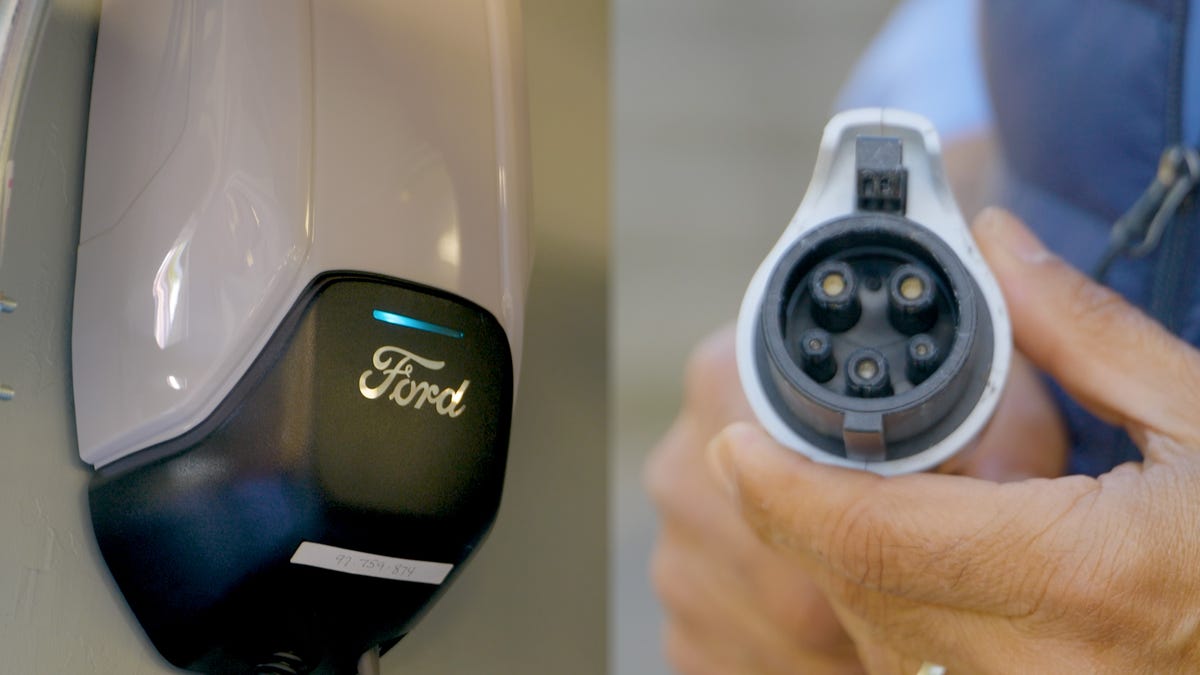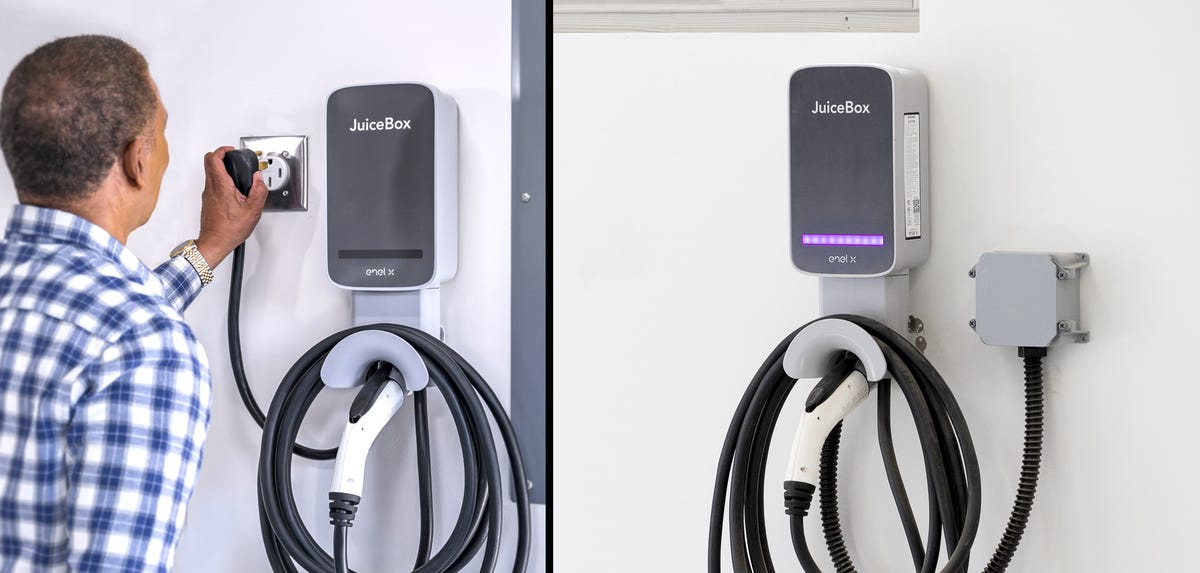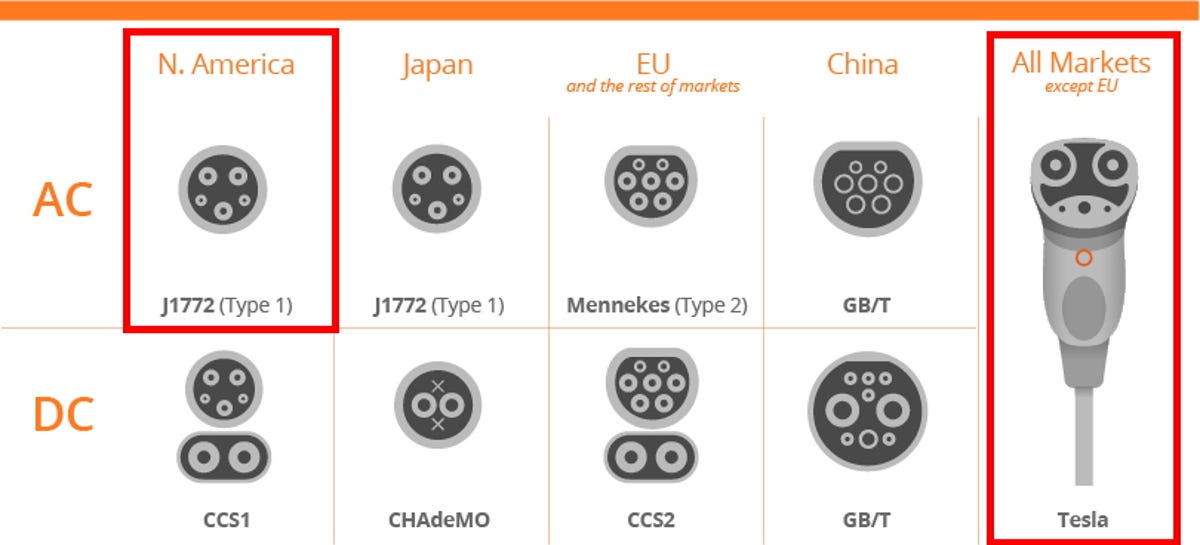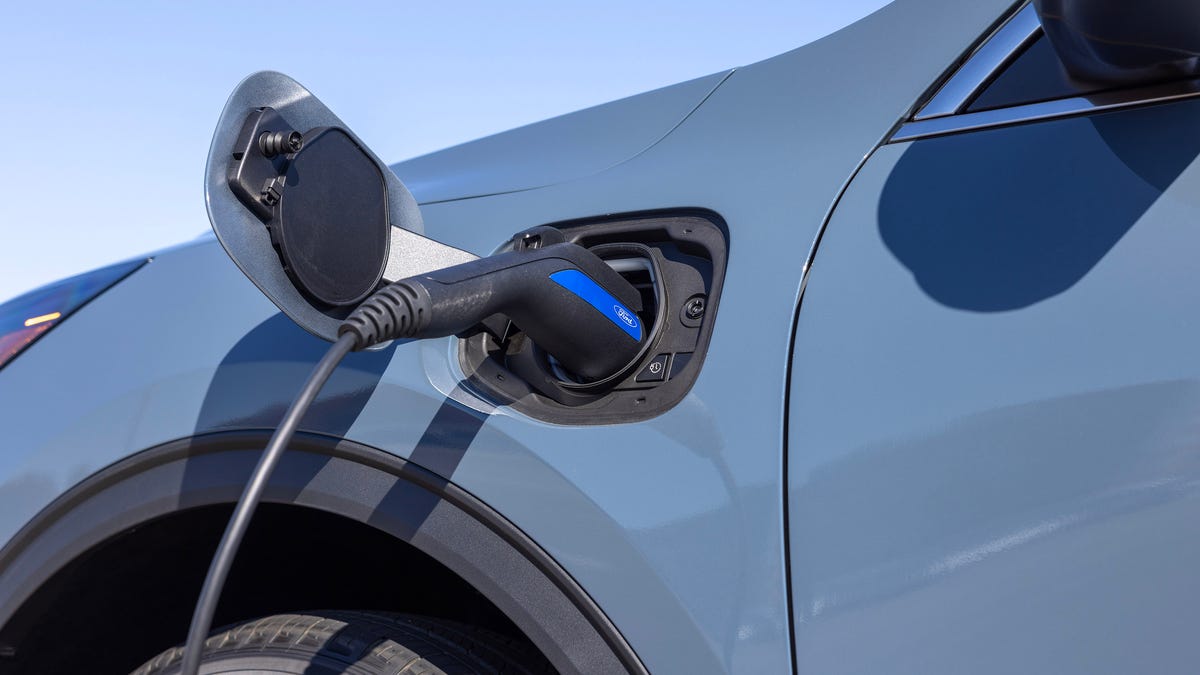Review sản phẩm
Sạc Xe Điện: ABC của 3 Loại Sạc – Nhanh chóng & Dễ hiểu!
Sạc Xe Điện: ABC của 3 Loại Sạc – Nhanh chóng & Dễ hiểu!
Việc sạc xe điện có vẻ phức tạp, nhưng thực chất lại rất đơn giản nếu bạn hiểu rõ các cấp độ sạc. Bài viết này sẽ giúp bạn làm quen với 3 loại sạc chính, từ đó lựa chọn phương pháp sạc phù hợp nhất cho chiếc xe điện của mình. Đừng lo lắng, chúng tôi sẽ giải thích thật dễ hiểu, chỉ cần 1, 2, DC là bạn đã nắm rõ!
Ba cấp độ sạc xe điện:
- Sạc cấp 1 (Level 1): Đây là phương pháp sạc đơn giản nhất, sử dụng nguồn điện gia đình (220V) thông qua một bộ sạc onboard đi kèm với xe. Tốc độ sạc chậm nhất, phù hợp với những ai chỉ cần sạc qua đêm hoặc trong thời gian dài. Tuy tốc độ sạc chậm, nhưng đây lại là lựa chọn tiết kiệm chi phí và tiện lợi nhất vì chỉ cần một ổ cắm điện thông thường.
-
Sạc cấp 2 (Level 2): Sạc cấp 2 sử dụng nguồn điện 220V nhưng với cường độ dòng điện cao hơn so với cấp 1, nhờ đó thời gian sạc được rút ngắn đáng kể. Bạn cần một bộ sạc chuyên dụng (thường được gọi là bộ sạc AC) được lắp đặt cố định tại nhà hoặc tại các trạm sạc công cộng. So với sạc cấp 1, sạc cấp 2 nhanh hơn nhiều, phù hợp với việc sạc hàng ngày và tiết kiệm thời gian hơn.
-
Sạc cấp 3 (Level 3) hay Sạc nhanh DC (DC Fast Charging): Đây là phương pháp sạc nhanh nhất, sử dụng dòng điện một chiều (DC) với công suất rất lớn. Sạc DC chỉ có sẵn ở các trạm sạc nhanh công cộng và cho phép sạc đầy pin xe điện trong thời gian ngắn, thường chỉ tính bằng phút thay vì giờ. Tuy nhiên, sạc DC thường có chi phí cao hơn so với hai phương pháp trên. Sạc DC lý tưởng cho những chuyến đi đường dài hoặc khi bạn cần bổ sung năng lượng nhanh chóng.
Lựa chọn phương pháp sạc phù hợp:
Việc lựa chọn phương pháp sạc phụ thuộc vào nhu cầu sử dụng, ngân sách và vị trí sống của bạn. Nếu bạn chủ yếu sử dụng xe điện trong thành phố và có chỗ đỗ xe riêng, sạc cấp 2 là lựa chọn tối ưu. Nếu bạn cần sạc nhanh chóng cho những chuyến đi xa, sạc DC là giải pháp tốt nhất. Sạc cấp 1 phù hợp với những ai có ngân sách eo hẹp và chỉ cần sạc chậm trong thời gian dài.
Mua ngay thiết bị hỗ trợ sạc xe điện và các sản phẩm công nghệ khác tại Queen Mobile:
Bạn đang tìm kiếm những thiết bị hỗ trợ sạc xe điện chất lượng cao? Hay bạn muốn tìm hiểu thêm về các sản phẩm công nghệ khác như điện thoại iPhone, máy tính bảng iPad, đồng hồ Smartwatch? Hãy đến với Queen Mobile, nơi cung cấp các sản phẩm chính hãng với giá cả cạnh tranh và dịch vụ chăm sóc khách hàng tận tâm.
#sacxediện #sacnhanh #evcharging #level1 #level2 #level3 #dcfastcharging #queenmobile #iphonenvn #ipadminh #smartwatch #congnghe #xedien #xemaydien
Giới thiệu As Easy as 1, 2, DC? EV Charging Levels Explained
: As Easy as 1, 2, DC? EV Charging Levels Explained
Hãy viết lại bài viết dài kèm hashtag về việc đánh giá sản phẩm và mua ngay tại Queen Mobile bằng tiếng VIệt: As Easy as 1, 2, DC? EV Charging Levels Explained
Mua ngay sản phẩm tại Việt Nam:
QUEEN MOBILE chuyên cung cấp điện thoại Iphone, máy tính bảng Ipad, đồng hồ Smartwatch và các phụ kiện APPLE và các giải pháp điện tử và nhà thông minh. Queen Mobile rất hân hạnh được phục vụ quý khách….
Mua #Điện_thoại #iphone #ipad #macbook #samsung #xiaomi #poco #oppo #snapdragon giá tốt, hãy ghé [𝑸𝑼𝑬𝑬𝑵 𝑴𝑶𝑩𝑰𝑳𝑬]
✿ 149 Hòa Bình, phường Hiệp Tân, quận Tân Phú, TP HCM
✿ 402B, Hai Bà Trưng, P Tân Định, Q 1, HCM
✿ 287 đường 3/2 P 10, Q 10, HCM
Hotline (miễn phí) 19003190
Thu cũ đổi mới
Rẻ hơn hoàn tiền
Góp 0%
Thời gian làm việc: 9h – 21h.
KẾT LUẬN
Hãy viết đoạn tóm tắt về nội dung bằng tiếng việt kích thích người mua: As Easy as 1, 2, DC? EV Charging Levels Explained
There’s so much jargon around types of EV charging, sometimes you can feel like you need an engineering degree to understand it all. There can be a lot to keep track of: high voltage electricity, charging standards, vehicle compatibility, acronyms and charge speed.
I’ve had an eye on EV and the charging technology that quite literally powers them for over 15 years here at CNET. To help you understand what to expect, I’m going to break down how EV charging hardware works, what each level of EV charging means and give examples of the speed and performance you can expect when plugging in your electric car.
What is an EV charger? What’s not?
The box and cord that plug into the wall are what you’re probably thinking of as your “EV charger,” but that’s not what they are. Your EV’s charger is actually built into the vehicle’s onboard power electronics where it converts alternating current, or AC, electricity received from the grid into the direct current, DC, that can be received and stored by the EV’s battery.
The same hardware is often used to convert that DC energy back into AC to spin the wheels, incidentally, but we’re not here to talk about how electric motors work.
In fact, the charging cable and box are what’s known as EV supply equipment, or EVSE. But I’m an expert, not a pedant. I’ll be referring to EVSE as charging cables or charging stations going forward, since that’s what normal people call them.

The purpose of EVSE is to communicate an “all clear” with the onboard charger when the car is properly connected to begin charging and then stop and start supplying AC power as needed. It’s essentially a smart relay that ensures the safety of the high-voltage connection between your car and the grid, preventing arcing, sparking or fires. Some EVSE go above and beyond, adding features and value like smart energy monitoring via Wi-Fi or Bluetooth or charge scheduling. You can learn more about that in our Best Home EV Chargers guide.
Since the onboard charger is a fixed part of your EV, it determines (and sometimes limits) how quickly your EV can charge, what level of charging is supported and more. An EV can only charge as fast as its hardware is rated, even if connected to an EVSE that is capable of faster speeds.
Kilo-what?!
In order to understand differences, advantages and disadvantages of each level of EV charging, it helps to wrap your head around the units used to describe them. Electricity coming out of an outlet is measured in volts and amps, which combine to compute kilowatts supplied by the EVSE. If you think of electricity as a garden hose, voltage is the water pressure, amps measure the size of the hose and kilowatts are the flow rate of the water into a bucket, which is your battery. Measure how much electricity flows over the course of an hour into that bucket and you’ve got kilowatt-hours, the unit that describes the capacity of your EV’s battery.
So, an EV with a 65 kWh battery connected to an 11kW home charging station will take, optimally, just under 6 hours to fully charge from flat. It’s not that simple — a variety of factors affect charging speed which rises and falls as the battery approaches full — but that’s a good starting point.
Another way of looking at and measuring charging rate is in miles per hour. Here, we’re not talking speed on the road, rather miles of range added per hour plugged in. This number is computed by multiplying your EV’s charging speed by its energy efficiency, measured in miles per kilowatt hour. So an EV that averages 3.0 mi/kWh connected to an 11kW home charging station should add around 33 miles of range per hour plugged in.
Level 1 AC charging
In North America, a Level 1 charging station or cable operates at 120 volts AC, most commonly drawn from a standard NEMA 5-15 outlet. That’s the same voltage and outlet type you probably use to charge your computer or phone at home. You may not want to plug into just any old outlet, though. At that voltage, we’re looking at pulling a maximum of around 1.4kW for charging. Make sure that outlet, and the circuit supplying it, are rated to safely maintain that wattage to reduce the risk of overloading, tripping circuit breakers or fire.
For a full EV, Level 1 is the easiest charging station type to set up, making it a great introduction to living with an electric car. But this level can also feel painfully slow. A Tesla Model Y Long Range, with its 81kWh battery, takes around 58 hours (two and a half days!) to go from flat to full. Fully charging a Chevy Bolt’s 65 kWh battery would take around 47 hours.

Looking at our example Tesla Model Y Long Range, a 48-amp, 11kW Level 2 AC charging station will fill the battery in about 7.4 hours, adding around 39 miles of range per hour plugged in. A Chevrolet Bolt charges in under 6 hours at the same rate. This is significantly faster than the Level 1 station, making Level 2 a much better fit for drivers with long commutes, EVs that aren’t charged every day or multiple EV households that share a charging station. (Charging faster also makes it easier to fit your whole charging session into off-peak hours where electricity is cheaper, which can save you money.)
If your EV doesn’t already come with a portable Level 2 charger or you’re looking to juice up more quickly, budget anywhere from $250 to $700 for the EVSE itself. Installation can range from a few hundred bucks to over $1,000, depending on your home’s electrical system and any permits required in your area. Faster chargers tend to cost more up front and come with higher power requirements and installation costs, so balance your charging needs against your budget.
Once again, the ultimate charge rate is determined by your EV’s onboard charger. Plugging our Bolt or Model Y into an expensive 80-amp, 19.2kW station won’t add any more miles per hour than a more affordable 50-amp, 11kW setup. However, EVs with faster onboard chargers, such as a Porsche Taycan with its optional high-speed onboard charger or a Ford F-150 Lightning with the extended-range battery, may benefit from the bigger investment.
Level 3 DC fast charging
Level 3 EV charging is more commonly known as DC fast charging, and it’s a different animal from the first two levels. For starters, a Level 3 station supplies DC electricity rather than AC, bypassing the EV’s onboard charger to send power directly to the battery for the fastest possible recharge. Your EV’s charging speed limit is determined by its battery chemistry and thermal management systems.
DCFC stations also operate at much higher voltage than is usually available to residential customers (usually between 400 and 480 volts, but up to as much as 800 volts). This is why almost all DCFC installations are commercial or public stations like those on Tesla’s Supercharger network, Electrify America, EVgo or the upcoming Ionna network.
Read more: 2024 Will Be the Year We Figure Out EV Charging – CNET
DC fast charging currently ranges from 50kW up to 350kW, with most Level 3 stations averaging around 150 kW. Here again, however, your maximum charging speed will be limited by the capabilities of your car — though now it’s the battery and thermal management technology that’s the limiting factor, rather than the onboard charger.

Most automakers have recently committed to switching to the NACS standard for future generation EVs coming in 2025 and beyond. Adapters can be used to switch between J1772 and NACS fairly easily for Level 1 and Level 2 charging, which makes life easier for mixed standard households. DC fast charging CCS to NACS adapters are a bit more complicated but are also beginning to ship to interested EV owners as automakers — such as Ford with its recently revealed High Speed Charging Adapter — bring their Supercharger compatibility online.
!function(f,b,e,v,n,t,s)
{if(f.fbq)return;n=f.fbq=function(){n.callMethod?
n.callMethod.apply(n,arguments):n.queue.push(arguments)};
if(!f._fbq)f._fbq=n;n.push=n;n.loaded=!0;n.version=’2.0′;
n.queue=();t=b.createElement(e);t.async=!0;
t.src=v;s=b.getElementsByTagName(e)(0);
s.parentNode.insertBefore(t,s)}(window, document,’script’,
‘https://connect.facebook.net/en_US/fbevents.js’);
fbq(‘set’, ‘autoConfig’, false, ‘789754228632403’);
fbq(‘init’, ‘789754228632403’);
Xem chi tiết và đăng kýXem chi tiết và đăng kýXem chi tiết và đăng kýXem chi tiết và đăng kýXem chi tiết và đăng kýXem chi tiết và đăng ký
Khám phá thêm từ Phụ Kiện Đỉnh
Đăng ký để nhận các bài đăng mới nhất được gửi đến email của bạn.





